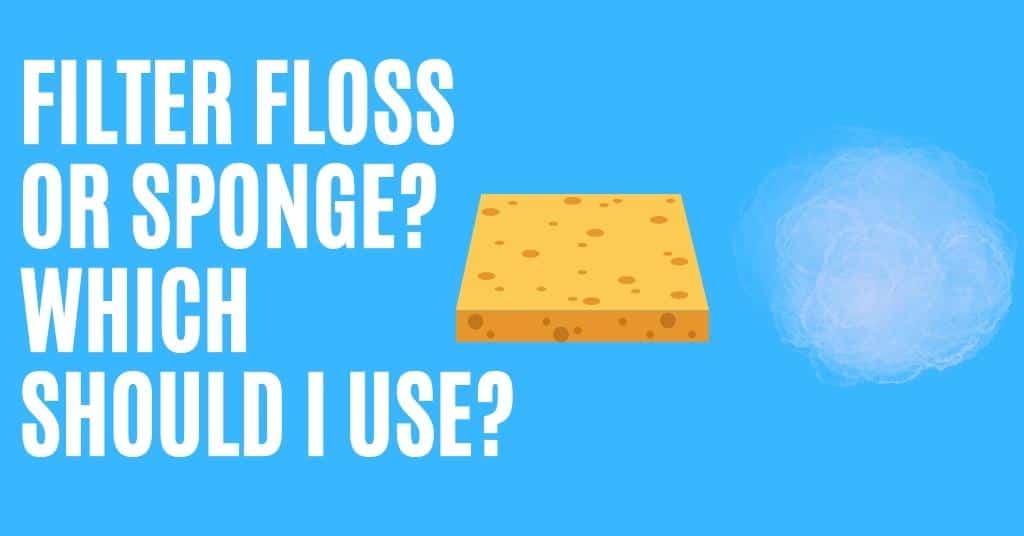Last Updated on February 18, 2022 by cmoarz
Mechanical filtration seems complicated but it doesn’t have to be. When choosing which to use, Filter floss or a sponge, It’s important to know what both of these things can do and what they are meant to do.

Filter Floss
Table of Contents
Filter floss (polyester fibers) is meant to catch the finer material that a sponge filter can’t catch with its larger pores. Filter floss also has the ability to hold more of its own weight in beneficial bacteria.
It’s used as a way to get the much finer material out of the water column to help keep the water crystal clear. To do this, the material must be changed about every 2 weeks.

Sponge
A sponge filter is meant for mechanical filtration but mainly works by catching larger particles out of the water and into its pores. A well-placed sponge can be used in step 1 of a filter setup.
The size of the pores on a sponge determines what is caught in it. A larger pore means more catching larger particles that would normally clog up filter floss. A sponge will last about 6 months with proper maintenance.
Both are effective ways of mechanical filtration but have different jobs when it comes to the nitrogen cycle in a fish tank. Filter floss can be used as part of your biological filtration but is mostly for the removal of fine debris.

Which should you use?
You should use both! A sponge should be first so it can catch the bigger particles that can clog the smaller pores of the floss.
The floss comes next and is able to catch the smaller particles the sponge can’t.

Filter floss maintenance is more troublesome than sponge maintenance but worth it
Filter floss clogs up pretty fast and needs to be replaced every couple of weeks. (Rule of thumbs, if you don’t have a sponge ahead of it, is once a week).
A sponge doesn’t need to be changed/cleaned nearly as often, although it should be done often enough to keep it in good shape.
If you don’t change your filter floss often enough, It will begin to produce nitrates which are toxic to your fish.
It’s like dipping a tea bag into the water once it’s dirty enough, so needs to be removed and replaced.
Sponge filters need only to be dunked for a few minutes in an old tank or bucket of tank water if they get clogged with larger particles or debris and once every couple of months and filled and re-hung so the water can flow in the tank again.
Both are important to have to help keep your tanks crystal clear and healthy if you are using mechanical filtration.

You can go one step further with polishing pads
If you want to go one step further, you can add a polishing pad layer on top of the filter floss layer.
Polishing pads and filter floss are similar in nature, but a polishing pad has even smaller pores (which is why it’s called ‘polishing’) to catch even finer particles.
The polishing pad will catch the smallest molecules that the filter floss will leave behind increasing its efficiency. It will also give you crystal clear water because everything that can go through the filter floss gets caught in the pad, giving a polished look to the water.
Sponges are easy to replace and maintain, Filter floss is a pain in the butt but worth it for fish health. Both have their jobs when it comes to maintaining crystal clear healthy tanks.

Extra Advice:
Filter sponges come in many pore sizes. You can double or triple up bigger to smaller to extend the life of your floss and pads even further!
You will notice many canister filters actually come with 3 or 4 different sized sponge filters.
The larger sponges catch the bigger particles and the smaller ones catch the mid-sized particles.
This helps you replace them less often and makes your tank’s water even clearer.
About
Owner of AquariumGravel.com and also owner of actual Aquarium Gravel believe it or not! ;). Setting up beautiful aquarium sceneries and habitats since I was very young. Enjoy!
- Web |
- More Posts(290)

